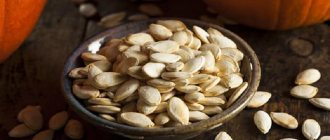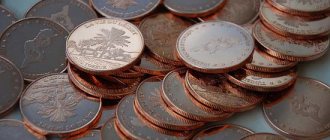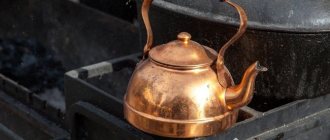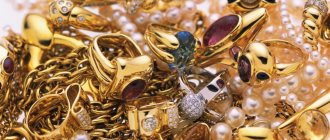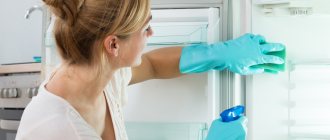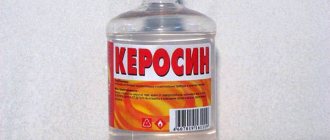It is not uncommon to encounter blackening of silver items, and coins are no exception. What causes silver to darken? As a rule, these are copper compounds. It is very easy to see them on the product: they appear in the form of a bright green color. This release occurs as a result of metal oxidation. Copper was previously added to low-quality silver, which is why you can see the “green” protruding on ancient coins.
So, what procedure does cleaning silver coins involve, and how to return silver to its original appearance and shine? How to do this at home?
Cleaning silver coins with soda
You can clean silver coins using ordinary baking soda. To do this, you just need to mix soda with running water until you get a mushy mass. The finished mass must be rubbed into silver coins until all the dirt and blackness comes off. After this procedure, the silver acquires a pleasant light color and begins to shine again. The main thing to keep in mind is that after cleaning with baking soda, small scratches remain on the silver item. They appear as a result of contact of silver with soda, which consists of small grains and is an abrasive material. And if the coin you want to clean is very important to you or has some value, it is better to abandon this cleaning method.
Using soda you can easily remove the green coating on coins. Copper is not added to high-grade silver, and such emissions do not occur. Only after the plaque has been removed can further cleaning of the coin be carried out.
Folk remedies
Folk remedies can also come to the rescue in cleaning silver coins. Of these, the most effective are:
- water from boiling eggs. Coins are placed in it for a couple of hours. Then the dirt is removed and removed;
- Peel the potatoes, fill them with water and put coins there. Leave for 3 hours, then rinse with running water and wipe dry;
- The products are kept in Coca-Cola.
Storage methods can also cause silver to tarnish. It is necessary to prevent the access of moisture and air to coins to prevent the appearance of black plaque and patina.
Cleaning with ammonia
This method of cleaning silver is probably familiar to everyone. Ammonia can be used to clean any silver item, including coins. It works just as well on green stains as baking soda. Such cleansing does not require any costs, and the result will pleasantly please you. To clean, simply dip the coin in ammonia, which must be purchased in advance at the pharmacy. The coin should be in the alcohol for about three minutes, after which it must be removed and wiped with a soft cloth. If the plaque is not completely removed, the procedure should be repeated until the coin shines and the dark plaque completely disappears.
Mixing baking soda with ammonia can clean your silverware. Using a cotton pad, apply the finished mixture to the product and then rinse thoroughly.
Using Home Remedies
If you are afraid of damaging an old rare coin, or the contamination is not too strong, you can try simply soaking the coin. Use distilled or boiled water - they have less sediment. Place the money in water for 12-24 hours, rub lightly with a soft cloth or brush. This procedure can be repeated several times. But if this doesn’t help, use one of the folk recipes.
Olive oil
Soak the coin in olive oil for 5-7 days. Check the condition of contamination, wipe the product with a soft cloth or brush. The procedure can be repeated. After removing the dirt, wash the coin with any soap or shampoo and wipe dry.
Citric acid or vinegar
Dilute a packet of citric acid in half a glass of water. When using 9% vinegar, 1 tsp is enough. for 1 glass.
Keep the coin in the solution for no more than a couple of minutes. Try cleaning it and see how the liquid works.
Be sure to rinse the product well in water, or wipe with alcohol.
Soap solution
You can clean coins with liquid soap or dishwashing detergent (for example, Comet or Fairy). The most gentle product is baby soap, the most alkaline-active is household soap. But it’s better to soak them in this solution first.
Dilute liquid soap with water to the consistency of jelly. Rub the bar soap on a grater and pour boiling water over it.
Place the coins for 1-2 hours. Gently remove dirt with a toothbrush, and clean with a toothpick if necessary. Rinse off with plenty of water. Some metals that tolerate alkali well can be kept in soap for several days.
Gold coins can be left for 3-4 hours in a soapy solution, rinsed and wiped dry. It is also possible to boil them for 10-15 minutes.
Mixed method
Prepare a mixture of 100 ml of distilled water or saline solution, 1.3 tsp. food grade citric acid and 2 tsp. liquid soap. Dip the coin into the solution for literally 2-3 minutes and start cleaning. Use a cotton swab, cotton pad, or soft cloth. Small details can be corrected with a toothpick.
Important. Citric acid has an aggressive effect on metal, so you should not clean it using these methods for a long time. In addition, after the procedures it is necessary to thoroughly rinse and dry the product.
Treatment with citric acid, vinegar or soap solution does little to help when cleaning aluminum coins. But you can try with copper, gold, cupronickel and brass alloys.
We recommend: How to properly wash your hands to avoid flu and coronavirus?
Boiling in water with oil
This method removes deep-seated dirt well. But before using it, it is better to initially remove the top coating using the above methods. The liquids are mixed in a 1:1 ratio, the coins are “cooked” for 10-15 minutes.
Toothpaste
Apply to a regular toothbrush; it is better to clean coins under running warm water.
It works well when working with products made of brass, cupronickel and aluminum. Copper and silver are unlikely to be cleaned with toothpaste. And precious and semi-precious metals can also be damaged.
Mixing toothpaste with vinegar creates a strong solution that quickly removes rust and oxidation.
"Coca Cola"
This drink has an excellent effect on oxidation on copper and nickel, as it contains phosphoric acid. Excellent for removing rust and dirt.
Pour some soda into a glass or bowl and drop in a coin. It is usually recommended to leave it in the liquid for 2 to 12 hours, but practical experience shows that some alloys can react unexpectedly to Coca-Cola. It is better to take the product out from time to time and check what changes have occurred to it.
Soviet coins are cleaned in Coca-Cola in about 4 hours, without deteriorating the surface. Gold coins will last 2-3 hours. Silver coins can be “boiled” in this soda for 3-5 minutes. They should be washed and dried only after they have cooled completely.
Alcohol
Most metals react positively to alcohol. Coins should be soaked in it for 30-40 minutes. It’s better not to experiment with regular vodka – some formulations contain too many impurities.
The best result can be obtained by mixing alcohol with formic acid. This composition restores the shine of modern coins, specimens from the times of the USSR and bimetal.
Baking soda
1 tbsp. l. Dissolve baking soda in 1 cup boiling water. Leave the coin for 8-10 hours. In the same composition, the product can be boiled for up to half an hour.
Excellent for cleaning gold items and coins. It is gentle on copper.
This is interesting. Baking soda, salt and sugar have almost identical cleansing properties. So you can replace soda.
Ammonia, ammonia
A 5% ammonia solution or regular ammonia, sold in pharmacies, are ideal for working with redness. It is better to clean coins with these products point by point, only in those places where the red coating is clearly visible. It is best to use a cotton swab.
Suitable for copper coins. Silver items can be completely placed in ammonia for 5–10 minutes, but contact with air should not be allowed during this time.
Cleaning with lemon juice or acid
Ordinary citric acid helps in cleaning silver coins, which can be purchased at absolutely any grocery store. A tablespoon of citric acid is poured into half a glass of water. A silver coin is dropped into the resulting solution. There is no need to leave it there; you can take it out right away. After this, the coin is wiped with a clean napkin. Cleaning with citric acid is considered quite aggressive compared to other methods. If you keep coins in solution for some time, the silver can be damaged, it will lose its shine and natural color, which will be very difficult to return.
Coins can also be cleaned using natural lemon juice. The result will pleasantly surprise you; the coins will sparkle in a new way.
To clean silver, a weak solution of sulfuric acid is sometimes used. To carry out the procedure, you need a porcelain dish in which the coin is placed, after which it is filled with a weak acid solution. The coin must be periodically removed and wiped, then rinsed thoroughly under running water until all visible dirt is removed.
There is also a way to remove blackness and plaque from silver items using foil and salt. For this cleaning method you will need a small piece of food foil, a handful of salt, and running water. Salt is poured onto a small piece of foil (about half a teaspoon), a teaspoon of ordinary tap water is poured on top, all this is thoroughly mixed to a mushy mass. The coin must be placed on top of the slurry, then the edges of the foil must be folded to avoid spilling wet salt. The aluminum foil should be in good contact with the coin (for good electrical contact). There is no need to press the coin, nor do you need to rub it. This may cause scratches on the surface of the coin. Heavily soiled silver items can be left in the prepared brine overnight, after being wrapped in foil.
Basic Rules for Cleaning Silver Coins
If coins are not stored in special cases or were recently found in the ground, dust and dirt may remain on them. Before using any cleaning products, all contamination from the surface must be removed. If antique silver coins have developed a patina due to oxidation, it is left behind. It can indicate the age of the item and increase its value.
Before treating coins with special solutions, you need to perform a number of preparatory measures:
- Remove dirt and dust from the surface with a soft, clean cloth. To remove debris in hard-to-reach places, you can use an old toothbrush;
- movements during cleaning should be smooth, without strong pressure, so as not to erase the inscriptions on the surface of the coin;
- Do not use abrasives or metal brushes even when very dirty;
- After cleaning, the coins are washed under running water and wiped dry.
Each coin is washed separately, because... together they can scratch each other.
Cleaning with toothpaste and soap
A well-known method for cleaning silver items is cleaning with toothpaste or tooth powder. To do this, you need, respectively, tooth powder or toothpaste, a soft toothbrush (or a clean cloth made of natural fabric). When choosing this method for cleaning a coin, it is worth remembering that toothpastes can be both abrasive and regular. Using abrasive toothpaste may scratch the surface of the coin. If you want to avoid such incidents, it is better to use toothpaste without abrasive particles. Sometimes an ammonia solution is added to the toothpaste, and the finished mixture is used to clean the silver.
Cleaning a silver item with soap is perhaps the most gentle, but not the most effective. Using a soap solution, you can easily clean the most common stains, but it is unlikely that you will be able to remove plaque from the surface of the coin.
Other ways to clean silver
You can also add shine to the product using ordinary table vinegar 6%. Use a cloth previously soaked in vinegar to wipe the coin until the desired result is obtained. For better results, you can warm the vinegar a little.
Many people claim that you can restore the shine and color of silver using ordinary chicken eggs, namely water from boiled eggs. To do this, you just need to boil the eggs (no matter in what quantity), let the water stand until it becomes warm, then lower the silver item into it. Then take it out and wipe it dry.
In any jewelry store you can easily purchase a special product for cleaning silver jewelry. The liquid is an acidic solution that does not require dilution. The principle of operation of this product is to remove a very thin layer of metal. Before using such a product, you must read the instructions to avoid damage to the product. This product is quite cheap. Its price can vary from 70 to 200 rubles.
For coins with a high standard, not lower than 625, you can use a tool such as Silbertauschbader. Professional restorers use it in their work. This product will easily remove all traces of oxidation and give the coin a second life. But finding it is very difficult.
Based on the sample size of the silver item, its rarity and level of contamination, everyone decides for themselves which cleaning method suits them best. All of these methods will allow you to return the original color of silver, its shine and naturalness. But the main thing is to store silver items correctly, avoiding contact with humidity and other environmental influences. Try, experiment, clean silver in a way that is convenient for you.

